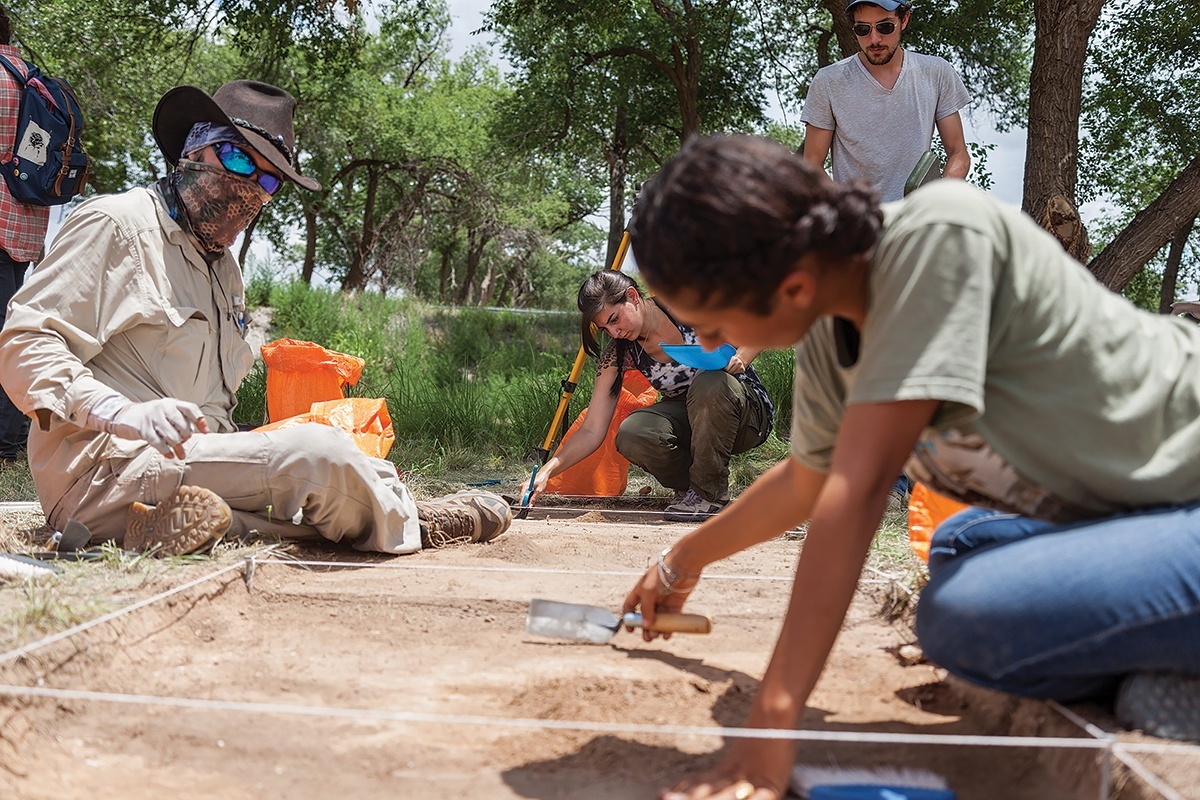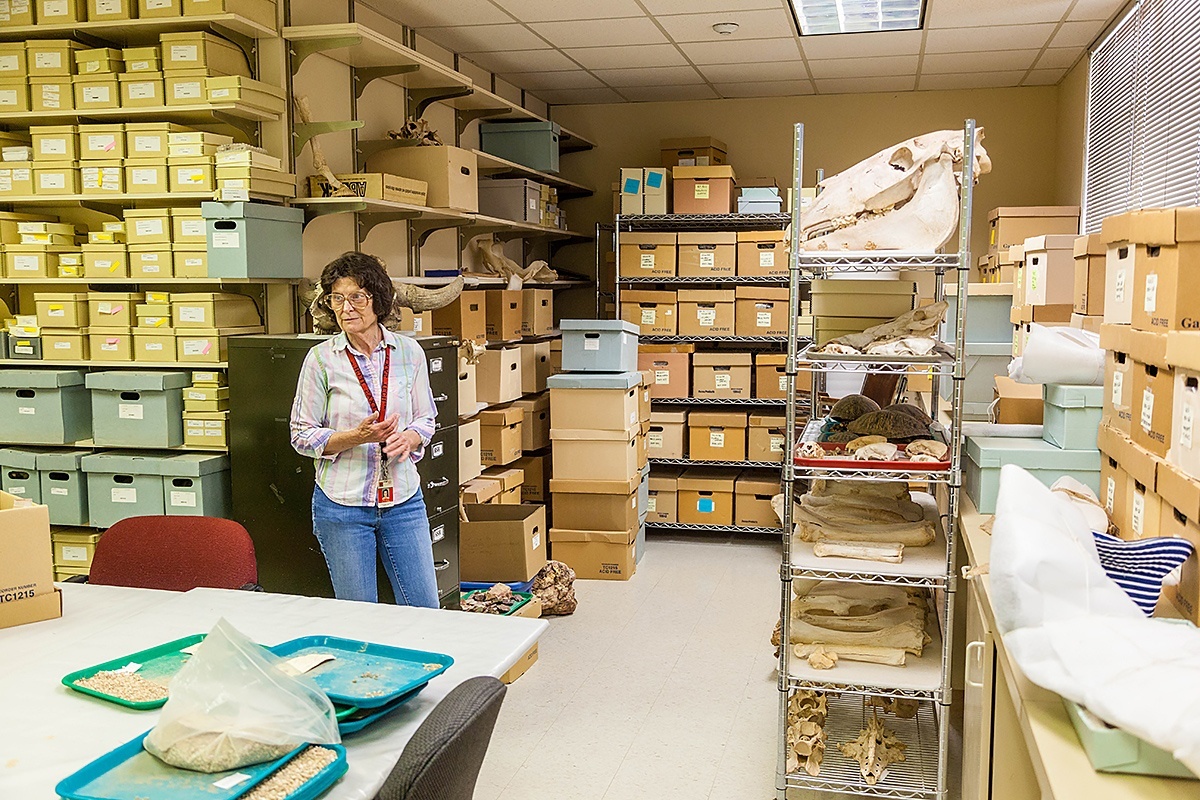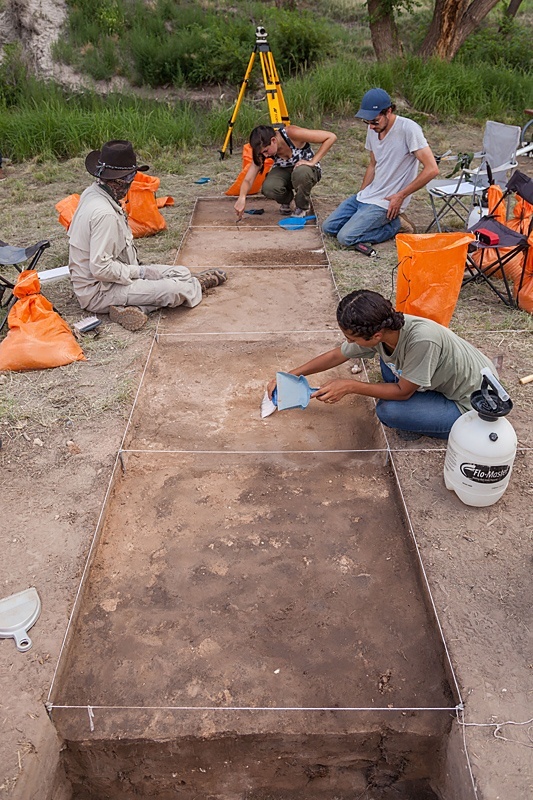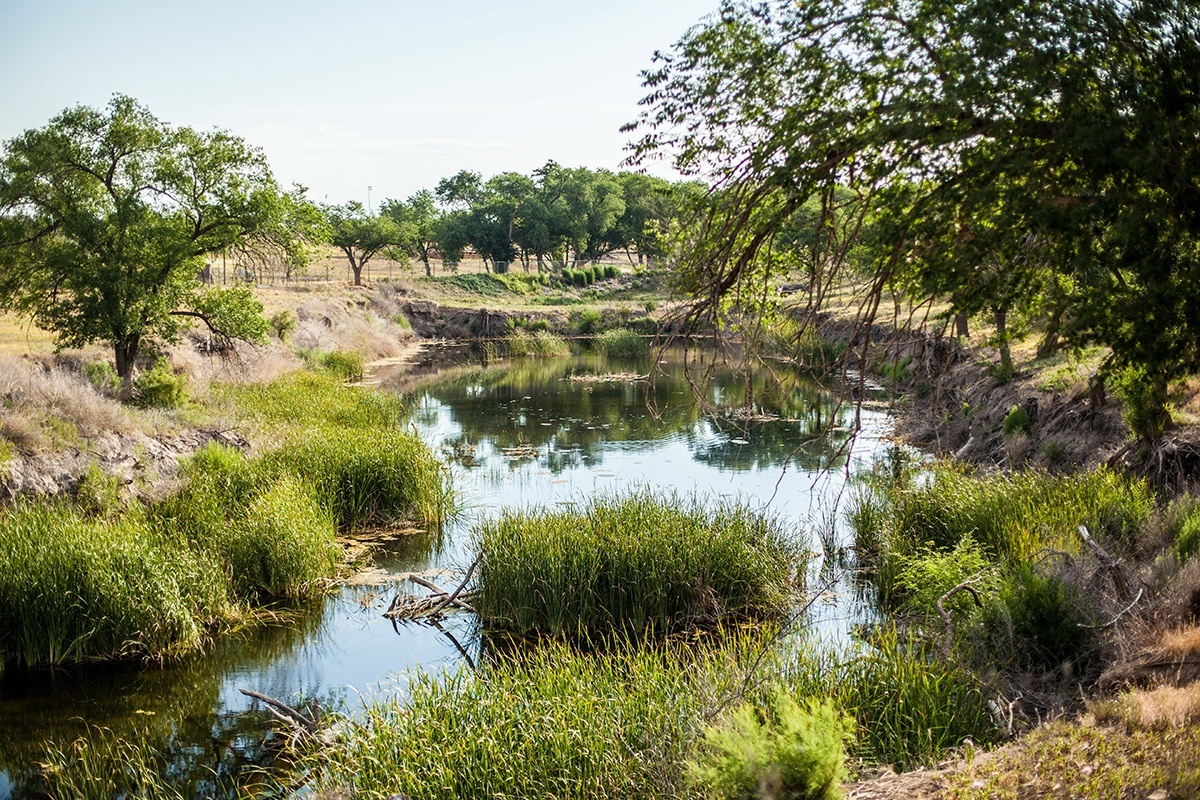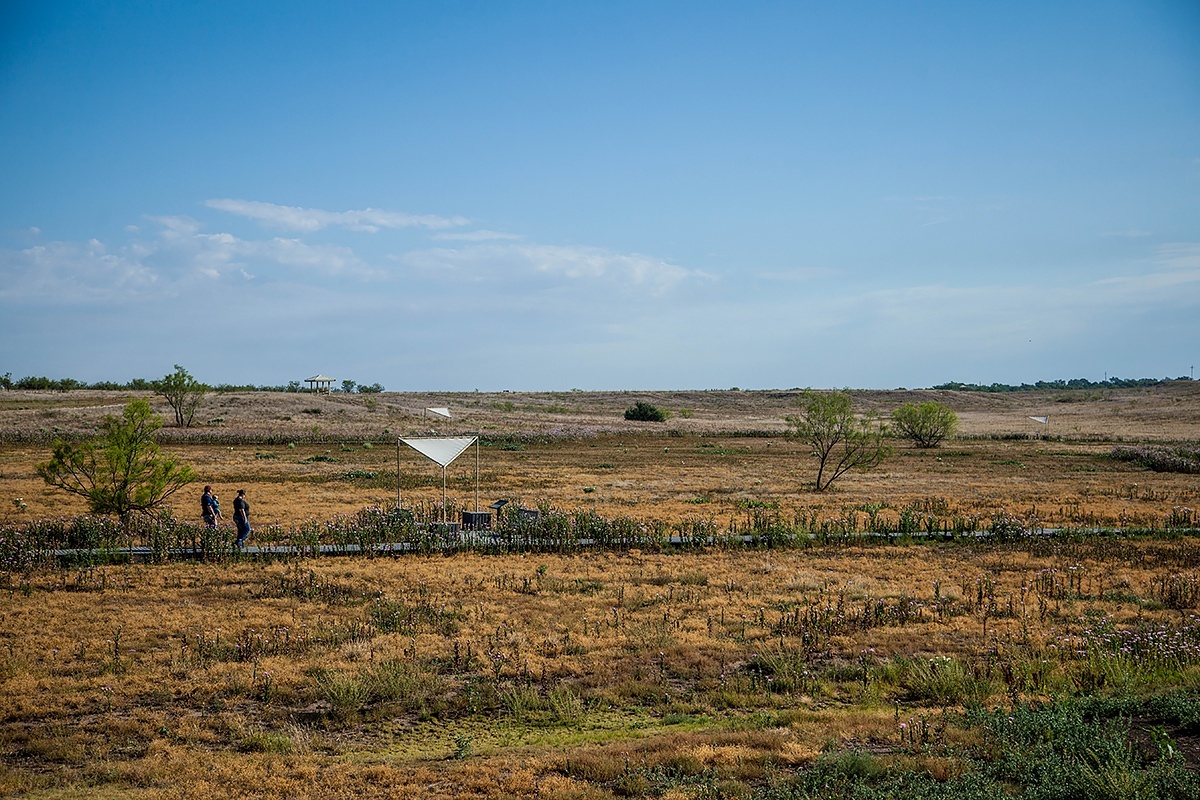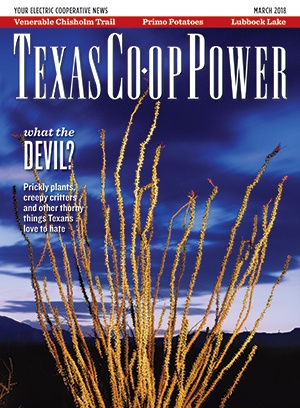Dominating the entrance to Lubbock Lake Landmark historic site, a Columbian mammoth sculpture poses as a life-sized rendering of the 8-ton animal that died here 11,500 years ago. Researchers at this archaeological preserve have uncovered mammoth bones as well as the stone tools used to kill and butcher mammoths and other animals at the end of the most recent ice age. The site is unique in North America because layers of sediment in its ancient stream bed reveal that nomadic people and their prey stopped at this water source for more than 10,000 years.
Journey through that history inside the Nash Interpretive Center, where you learn how spear and knife points were created. “We have evidence of people here for every culture through millennia: from Clovis people with stone-point spears hunting mammoths and bison to the hunters and early ranchers of the Comancheria in the 1800s. We are the latest in a long line of civilizations to live here,” says Deborah Bigness, Lubbock Lake Landmark operations manager. “Because of the Ice Age movies, kids think we’re really cool.”
The geological formation known as Yellow House Draw can be read like a book. If you know the language, you can “read” details about the plants, animals, cultures, geology and environment in each layer of the watercourse. “We learn as much, if not more, from what is around the artifact,” Bigness says. “Man first lived here at the end of the ice age, when the plant material shows the climate was much cooler and wetter.” Displays present shell beads and obsidian blades that suggest trade with distant tribes.
At different times, Lubbock Lake was a large lake, stream, ponds and marsh. Along the way, giant short-faced bears, camels and mammoths disappeared from the area. Archaeologists can’t tell whether hunting or an inability to adapt to a changing climate triggered the extinctions.
Analyses of ancient bones have revealed that Folsom hunter-gatherers, who occupied central North America about 10,000 years ago, focused on hunting a now-extinct bison. Thanks to the Lubbock Lake Landmark’s 3-D replicas, you can feel the sharp edges of Folsom projectile points and the heft of bison bones.
Outside, past the giant short-faced bear sculpture and across the pedestrian bridge, you’ll find the 1-mile, self-guided archaeological trail that circles the ancient lake.
The archaeological site was discovered in 1936 when a steam shovel digging out the lake to rejuvenate the springs dumped a projectile point on a waste pile. Boys brought their find to West Texas University (now Texas Tech) professor Curry Holden. Today’s raised trail, built on the old dredge island, bisects the lake near its horseshoe bend and, initially, makes it difficult to picture the lake that was. But ample, lucid interpretive signs explain how archaeological digs unveil the mysteries of the past. Year-round, you can schedule a guided tour for a more in-depth view of the site’s past and present.
“We think we’ve excavated about 5 percent of the material here,” Bigness says. The 335-acre landmark, part of the Museum of Texas Tech University and a national historic site, has held digs every year since 1972. Although the lake’s horseshoe bend was bone-dry in 2009, by 2016, rising water began flooding that year’s archaeological excavation. Orange sandbags higher up on the bank mark the 2017–2018 dig. Visitors can observe archaeology in action every July.
The landmark doubles as a natural history reserve, its landscape brimming with American basket flowers, buffalo gourds, prickly poppies and interpretive signs. Sightings of cottontails and the elusive Texas horned lizard reward visitors on the half-mile, ADA-accessible Llano Estacado Wildflower Trail boardwalk. The 3.5-mile trail across the restored shortgrass prairie circles back to the entrance, so you will never get lost—in time or space.
Eileen Mattei, a member of Nueces and Magic Valley ECs, lives in Harlingen.
